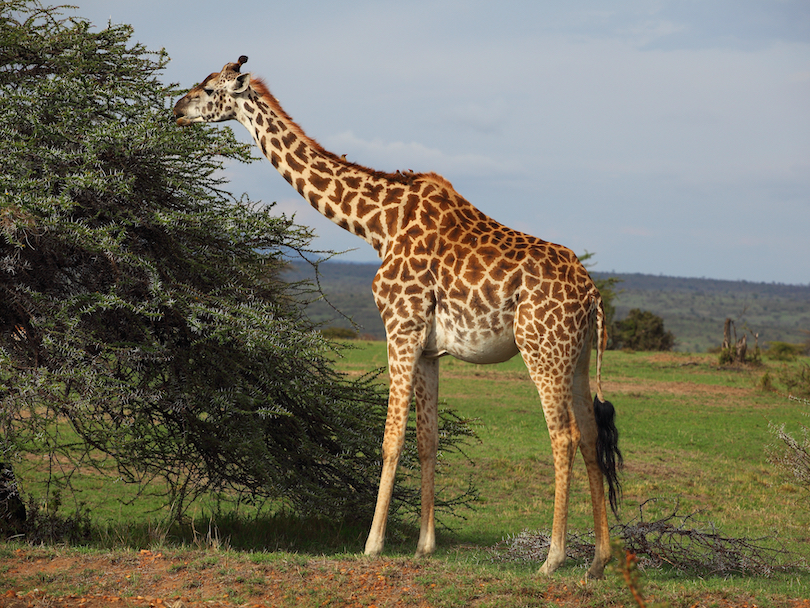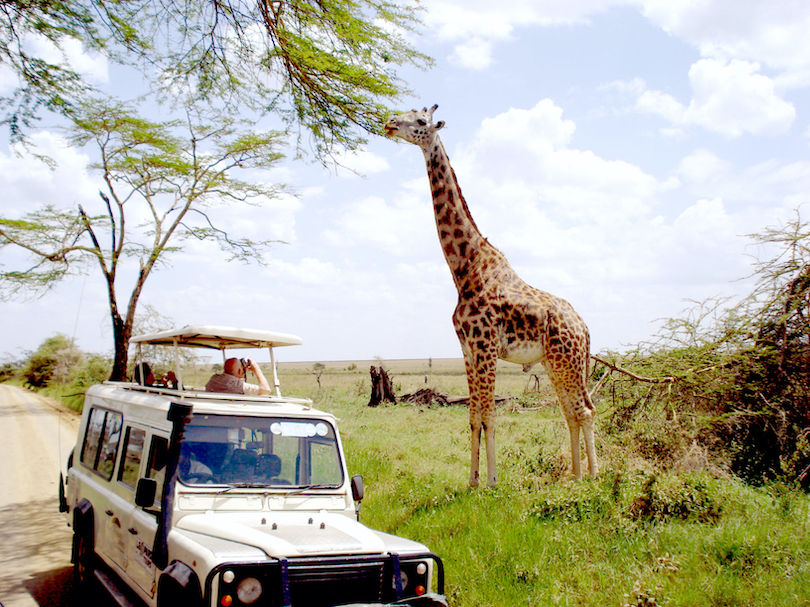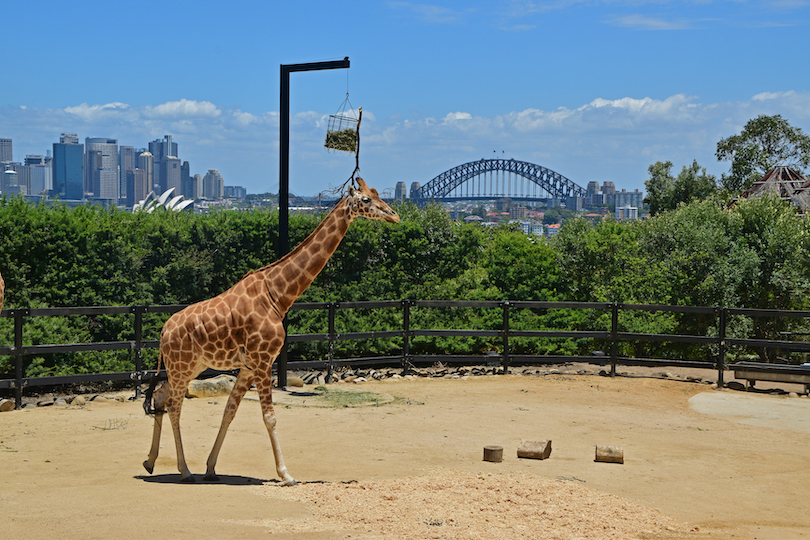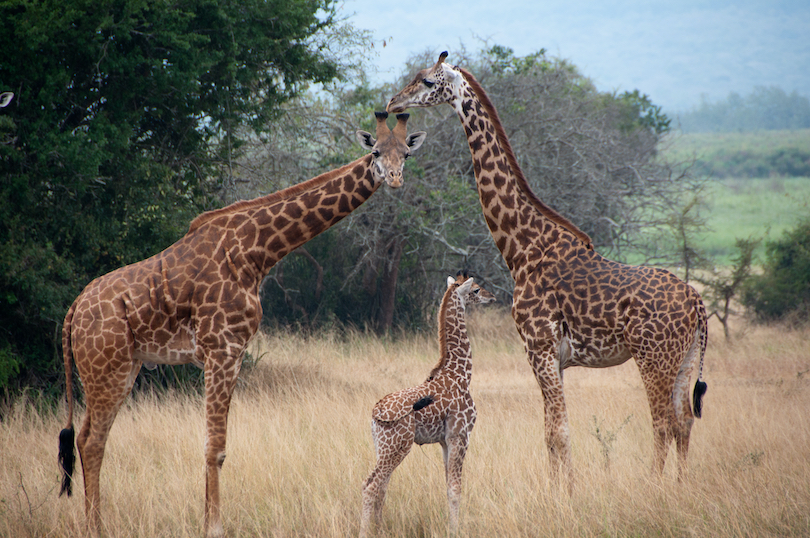What Do You Hand Feed Giraffes
Giraffes live in sub-Saharan Africa, distributed across countries like Kenya, Cameroon, Niger, Zimbabwe, Namibia, and South Africa. Their natural habitats are wild grassland plains, woodlands, and African savannas.
Giraffes are the tallest mammal in the world and can measure up to 6m. There are four species of giraffe in the African continent, the Masai, Northern, Southern, and Reticulated. There are slight variations in coloring across the different giraffe species.
All the giraffe species are characterized by markings on their body, dark patches that vary in shape and size. The markings on each giraffe are unique, like a human's fingerprint.
Taking a closer look at a giraffe's diet…
 © Dreamstime
© Dreamstime
Giraffes are herbivores: they eat foods of plant origin and choose to avoid anything of animal origin. They are browsers, mainly feeding on the leaves of bushes and trees.
Giraffes use their long necks and legs to give them an advantage over other animals when they feed. Their main food sources are leaves from tree tops that other species can't reach. They rarely eat ground foods, as they are awkward for them to get to.
Up to 90% of a giraffe's diet is made up of leaves. Acacia tree leaves are their favorite! They also feed on seasonal fruit, flowers during blossom season, and occasionally grasses and herbs.
Another important feature of giraffes is their long dark blue tongues that measure between 45-50 cm and help them feed. Their tongues are extremely flexible. A giraffe uses its prehensile tongue to feed by wrapping it around leaves and pulling.
When do giraffes eat?
 © Dreamstime
© Dreamstime
Giraffes spend most of their time eating. It is estimated they spend some 16-20 hours a day eating. They normally browse during the morning and evening when the sun isn't as strong and spend the afternoon hours in the shade chewing cud.
They adapt their diets seasonally, feeding on whatever leaves, fruits, and flowers are abundant. By not limiting their diet to one food source they can find food comfortably throughout the year and avoid the need to feed more in any given season.
How much do giraffes eat?
Giraffes are tall and heavy, weighing up to 2000 kg. To maintain their strength and weight, they need to eat a lot. They eat about 35 kg of food per day. This takes a lot of browsing and chewing considering how little leaves weigh!
Fortunately, giraffes have evolved various adaptations that allow them to eat food sources most wild animals avoid, like leaves from thorny trees and high up branches. This reduces competition for food sources.
Their need to consume a minimum of 15kg of food per day does put them at an increased risk when there are food shortages. Rising temperatures and changing climate conditions can cause droughts that affect the giraffe's food supplies.
How do giraffes eat?
 © Dreamstime
© Dreamstime
Giraffes have various adaptations that help them feed. They are tall, have long, prehensile tongues, a dental pad, and thick, sticky saliva.
They use their tongues to navigate the spikes on thorny trees, like the acacia tree. Their long tongues then wrap around the leaves and pull them off the branch, so the giraffe can feed without getting thorns in its mouth.
Giraffes have a hard dental pad on the top gum at the front of their mouths which they use in conjunction with their bottom teeth to grab and tear at leaves.
They've also evolved thick, sticky saliva that covers any thorns that do make it into their mouths. The layer of saliva acts as a protective capsule that prevents thorns from getting stuck in their throats. Once in their stomachs, the thorns are broken down and digested.
What do giraffes avoid eating?
Whilst their height is normally an advantage for the giraffe, it also makes it hard and awkward for them to reach anything down low. To reach the ground they have to spread their front legs comically wide and lean their necks forwards and downwards; or get on their knees.
This position puts the giraffe in a vulnerable position, making it an easy target for nearby predators. It is because of this that they rarely eat grasses, herbs, and fruits from the ground. When they do, they gather in groups so some giraffes can feed whilst others keep a lookout for predators.
Another reason that giraffes don't feed on lower food sources is their physiology. Curiously, when giraffes bend their necks downwards the valves in their neck arteries close, cutting off the blood supply to their heads. This is also thought to be why giraffes drink quickly, using a biological system similar to a pump.
How do giraffes digest their food?
Plant matter is hard to break down as it has a high cellulose content. To get around this, giraffes have a specially adapted stomach.
This animal is classified as a ruminant, like the cow, as their stomach is divided into four compartments. The rumen, reticulum, omasum, and abomasum.
Giraffes chew and swallow plant matter that passes to the rumen. Here it mixes with symbiotic bacteria that break down the cellulose into sugars. The food mass, now called cud, moves to the reticulum, and is then regurgitated.
The animal chews the cud again, further breaking it down. It then swallows for a second time. The cud moves through the omasum, the stomach chamber where water is absorbed from the cud, and abomasum before moving into the small intestine.
From here the processed cud will move through the digestive system, where nutrients and water are absorbed into the body so they can be used as an energy source.
What do giraffes eat in captivity?
 © Dreamstime
© Dreamstime
It is important for zookeepers to keep the diets of captive animals as similar as possible to their diets in the wild. A survey was carried out to investigate what 153 zoos were feeding captive giraffes.
All the zoos in the study fed the giraffes with fresh browse, like tree leaves and branches. But browse didn't make up 90% of the giraffe's diet as it would in the wild and was closer to 60-70% of their total feed.
Most zoos fed them lucerne hay, pelleted compound feed, cereal grains, fruit, and vegetables. Zoos should be cautious when feeding giraffes high proportions of fruit and vegetables as it is suspected that the high sugar content interferes with a ruminant's digestion.
In winter, when fresh browse is harder to find, the giraffes were fed more dry food, fruit, and vegetables. But these should never make up more than 50% of the giraffe's diet.
What do giraffe calves eat?
 © Dreamstime
© Dreamstime
Giraffes have a 13 to 15 month gestation period (pregnancy) before birth. They appear to give birth in groups at specific calving grounds. It has been observed that daughters will return to their place of birth to give birth there themselves.
Giraffes adapt their diets according to the seasons to ensure food sources are bountiful. Because of this calving isn't restricted to a particular season.
Giraffe calves begin nursing just an hour after birth. They will continue nursing until about 6 to nine months. But, unlike most calves, they will start to eat solid foods early on.
A week after birth, giraffe calves will already be sampling different vegetables. At 4 months old, they begin to eat leaves, which will become the biggest component of their diet once they finish nursing. They continue nursing for another 2-5 months, but progressively rely less on their mother's milk as their main food source.
What eats a giraffe?
Adult giraffes aren't often predated on by other wild animals. Giraffes are incredibly strong, and their mere size makes them hard to hunt. Predators will often hunt giraffe calves as they are only 2m tall, making them easier prey.
The known predators of the giraffe are lions, leopards, crocodiles, and humans. Predation is a threat to giraffe calves, with scientists predicting that only a quarter will make it to adulthood because of predation.
Humans hunt giraffes for their hides, meat, and body parts. Certain cultures wear giraffe tails as goodluck charms. There are also cases of giraffes being victims of wildlife trafficking. Human activity is also leading to increased habitat loss which is affecting giraffe populations.
All factors considered, giraffe populations have decreased by 30% over the last 40 years. There needs to be stricter law enforcement and habitat protection schemes for populations to recover.
Source: https://wildlifetrip.org/what-do-giraffes-eat/
0 Response to "What Do You Hand Feed Giraffes"
Post a Comment